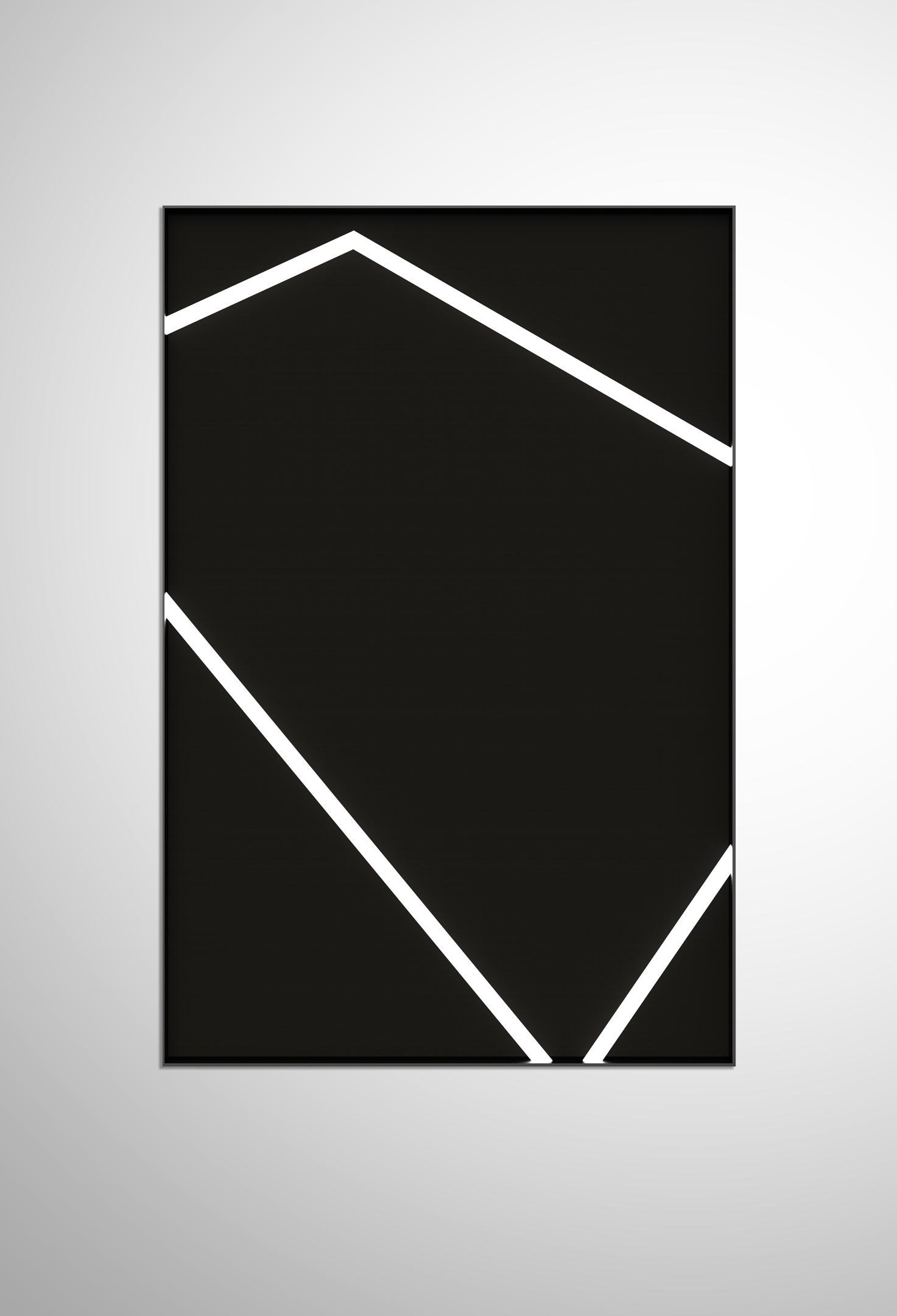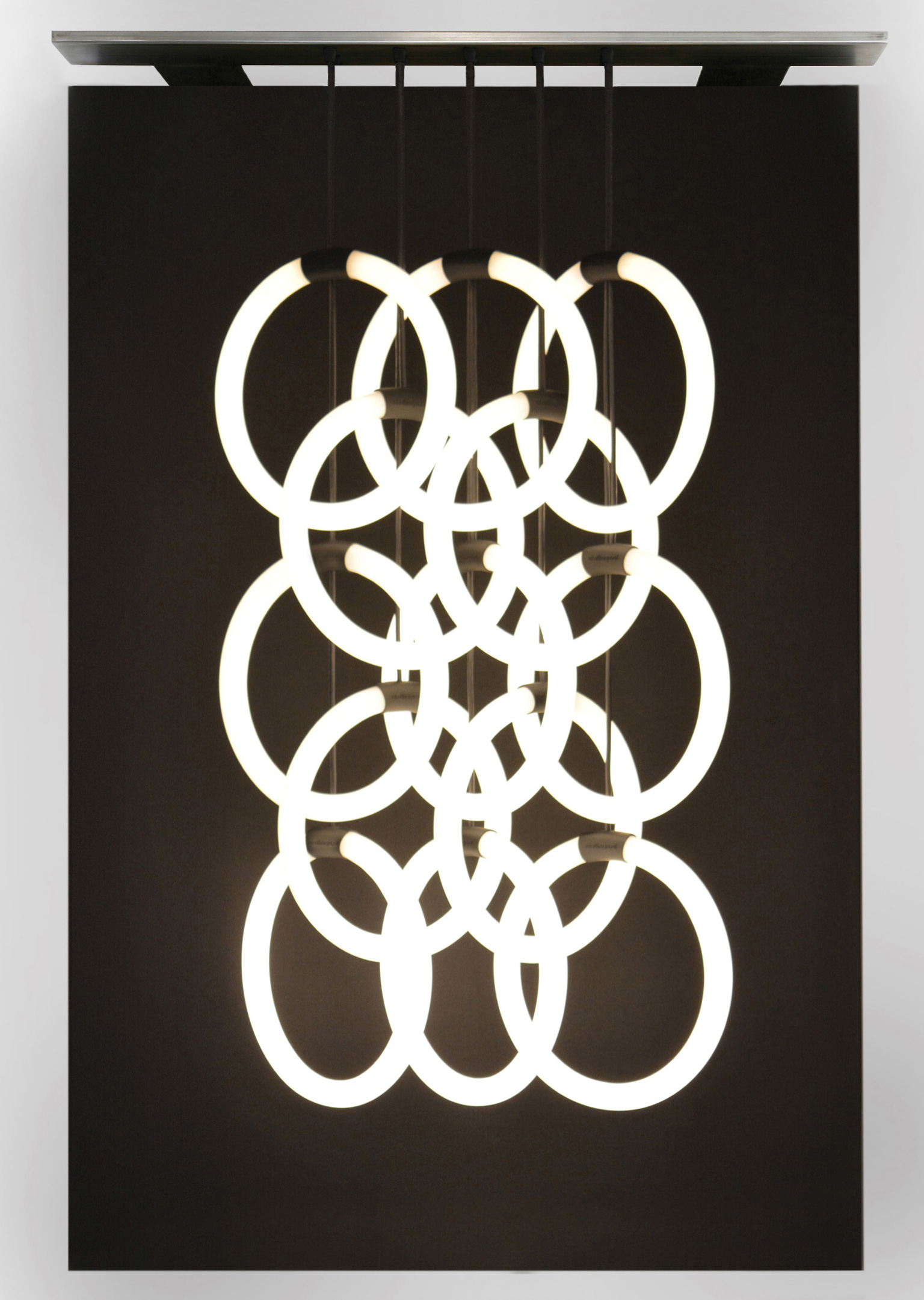Henk Stallinga
*1962 in Tytsjerksteradiel, NL
Lives and works in Amsterdam.



Henk Stallinga was born in 1962 and graduated from Rietveld Academy Amsterdam in 1993. That same year was also the founding year of his design studio. Nevertheless, he has kept strong ties to the arts. His works are reminiscent of the neoplasticism of the dutch art group De Stijl just as American Minimal Art.
It is easy to see Stallinga’s works in context with the light sculptures of Dan Flavin. The materiality of the fluorescent light tubes urges one to do so. But neither for Dan Flavin nor for Henk Stallinga materiality leads to an end in itself. For both, the arrangement becomes relevant only where it materializes: in space, in its perception, in movement, in the air, and on the walls, between the artwork and the recipient.
This greater connection is essential to put the works by Henk Stallinga in context and to come to a grasp with them. Even then, if – as is the case in the work Waiting in the Hallway – he works with tangible steel. It would be fatal to confuse the simplicity of form with the simplicity of perception. This was already important to Robert Morris. One should beware of it in the case of Henk Stallinga just as well. He is concerned with a greater all-encompassing perception, which is released by a rather simple form and its complex relation to space, the recipient, movement, air, and the surrounding walls. All are equally involved in the process of perception.

